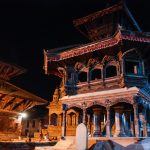The Shah dynasty is synonymous with the modern history of Nepal. From the unification of the country in the mid-18th century by Prithvi Narayan Shah to the abolition of the monarchy in 2008, the Shah kings played a pivotal role in shaping Nepal’s political, cultural, and diplomatic landscape. This article explores their legacy, analyzing their […]
King Mahendra vs. B.P. Koirala: Who Was More Nationalist?
Nepal’s modern political history is shaped by two towering figures: King Mahendra, the monarch who centralized power under the Panchayat system, and B.P. Koirala, the democratically elected Prime Minister and champion of liberal values. Their rivalry defined Nepal’s post-Rana era, with each claiming to represent the national interest. But who was more nationalist? Was it […]
Monarchy vs. Political Parties: Can Monarchical Rule Be Reinstated in Nepal?
Nepal’s political landscape has been marked by a dynamic interplay between monarchical authority and democratic aspirations. The abolition of the monarchy in 2008 marked a significant shift towards republicanism. However, recent years have witnessed a resurgence of pro-monarchy sentiments, prompting a reevaluation of Nepal’s political trajectory. Political Awakening in the 1940s The 1940s heralded a […]


